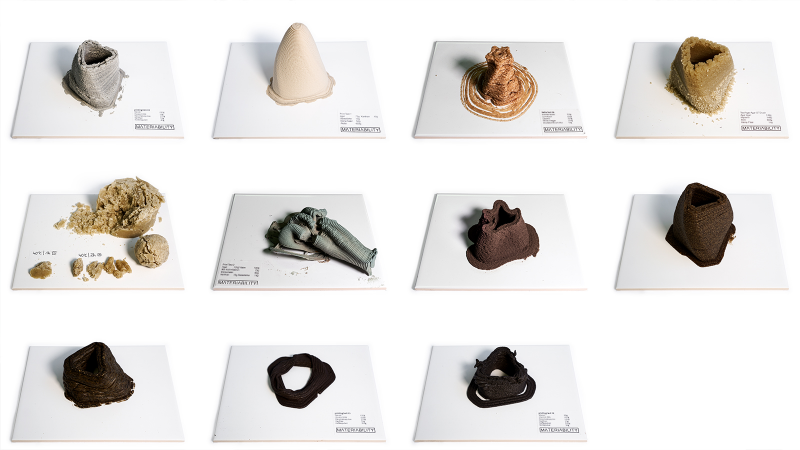3D Printing Bioplastics

"The recipes of bioplastics are simple and in general consist of three to five renewable biomass sources. A mixture is made of biopolymers, bio-plasticizers, and bio-additives. Biopolymers considered can be starch, gelatine, or agar agar. As bio-plasticizers usually glycerol or sorbitol are used. Further additives can be biowaste, such as coffee grounds or fruit skins, clay, vinegar, spirulina, sugar, soap, burlap, or hemp. Most bioplastics are water based and need to cure to reach a solidification state. Considering the above mentioned ingredients, a wide range of possible combinations and mixing ratios are conceivable. The goal is to incrementally and iteratively analyze mixtures and their ratios for plausible three dimensional deposition performances. Factors for evaluation are general material properties, such as strength, shrinkage, durability, cracking, color loss, curing time, pot life, additive energy sources (heating, cooling, and UV), viscosity, stickiness, workability, and processability. Further, costs for ingredients and preparation and the segregation between animal- and plant-based biomaterials will be considered."
Criado/Created: 31-07-2021 [15:33]
Última actualização/Last updated: 09-10-2023 [15:52]

(c) Tiago Charters de Azevedo